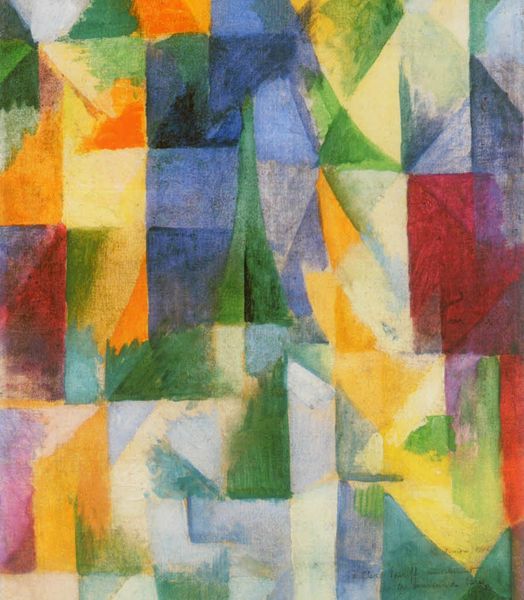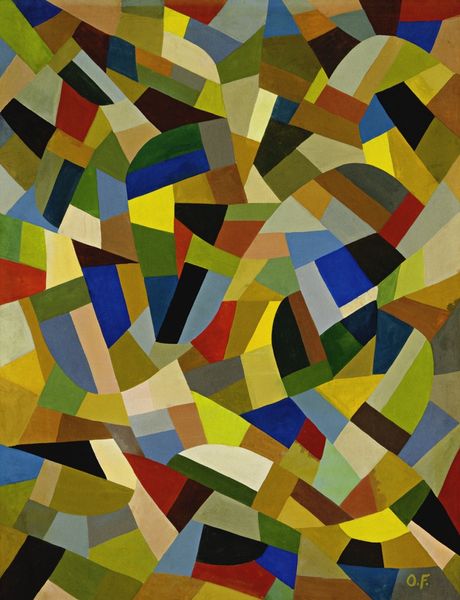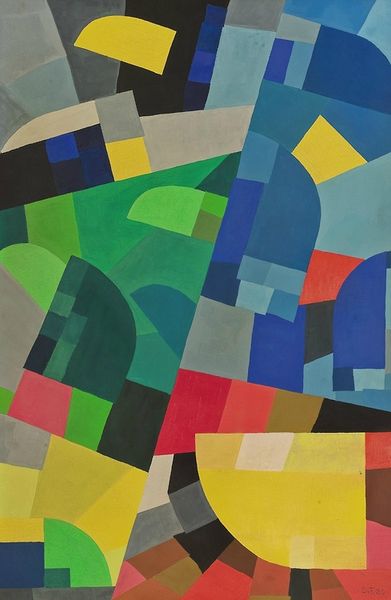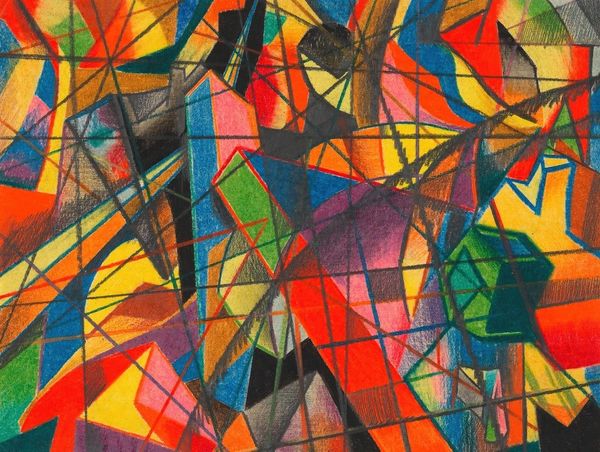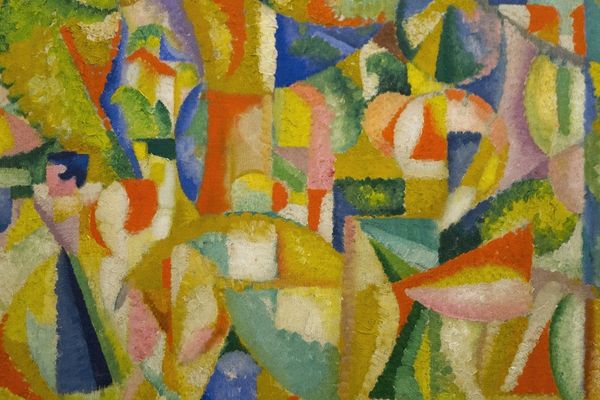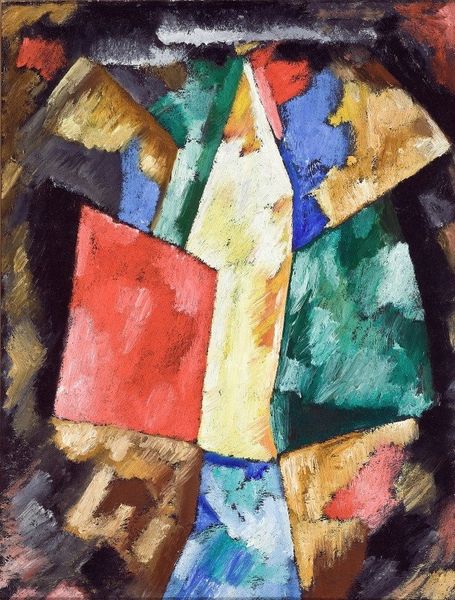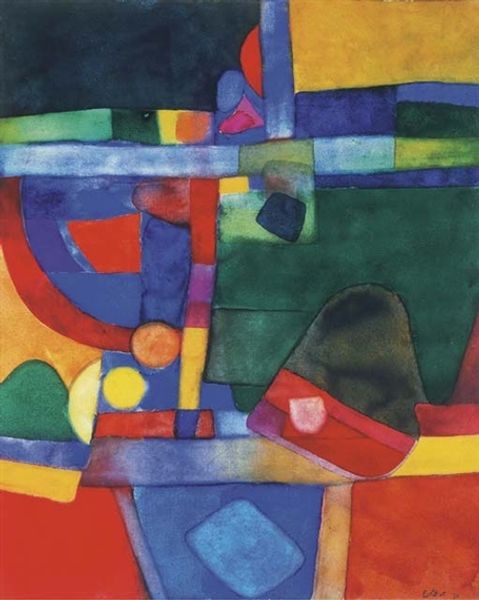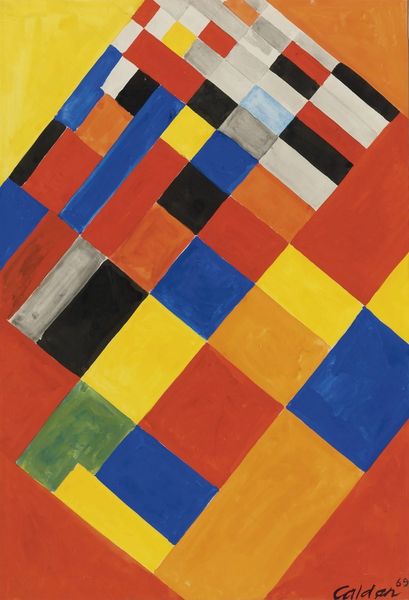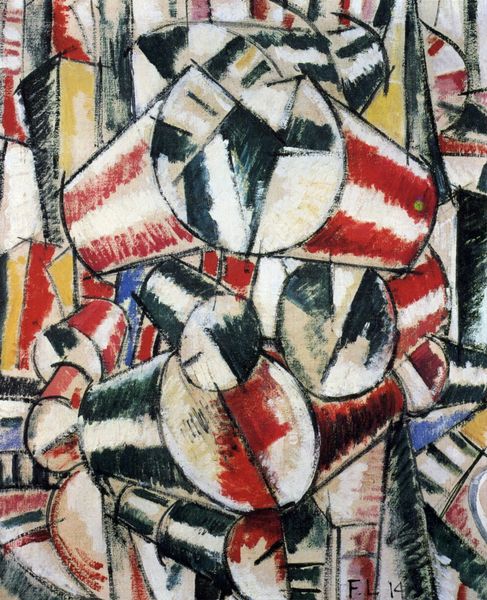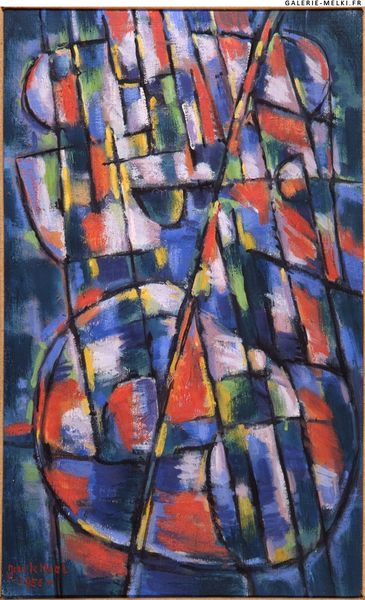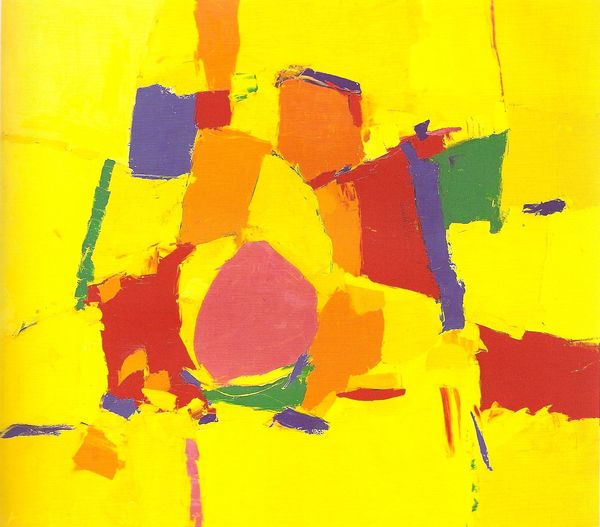
painting, oil-paint
#
cubism
#
art-nouveau
#
abstract painting
#
painting
#
oil-paint
#
geometric
#
abstraction
#
modernism
Copyright: Public domain US
Editor: Morgan Russell’s “Synchromy in Blue-Violet,” painted in 1912, is such a vibrant explosion of oil paint! The geometric shapes clash and complement each other all at once. It's visually chaotic, but somehow also harmonious. What symbolic language speaks to you when you look at this canvas? Curator: I see a struggle between order and chaos, represented through the fractured forms. Look at the interplay of colors—reds fighting against blues, yellows vying for attention. These hues act almost like figures in a narrative, a story about modernism breaking from tradition. Can you feel that tension? Editor: I definitely see that struggle now! The colors definitely feel like they are in conversation with one another, competing but somehow balanced. Curator: Exactly. And consider the title. “Synchromy” suggests a synchronization, an attempt to find harmony *within* that chaotic struggle. Think about what it meant to seek harmony as the world was hurtling toward the First World War. What is the deeper emotional content? Editor: Wow, the tension and search for harmony in such a tumultuous time definitely adds another layer. I can now see how these shapes and colors function as more than just abstraction. Curator: It’s about recognizing those historical tremors reverberating through a visual language. The work doesn't merely *reflect* a changing world; it actively *participates* in the cultural memory of the period. We are not only observers; we, too, are part of this ongoing dialogue. Editor: This really gives me a fresh lens to view early abstract work with greater historical context! Thanks for illuminating that. Curator: My pleasure. Keep questioning! That's how art keeps its power.
Comments
No comments
Be the first to comment and join the conversation on the ultimate creative platform.
